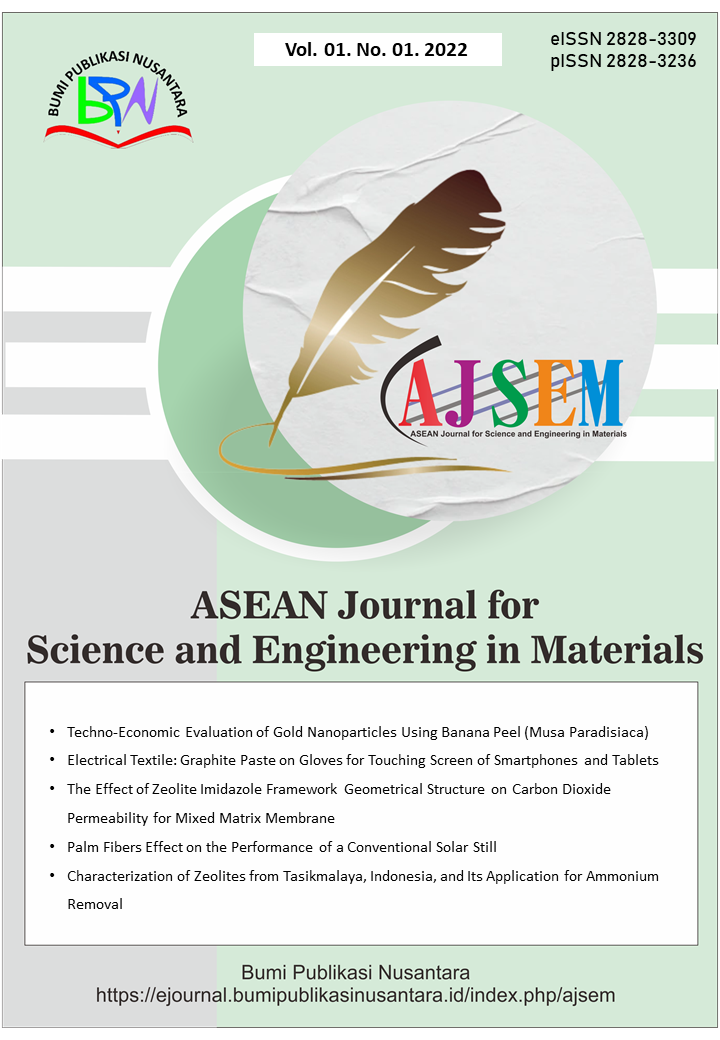Performance Study of Biocoating Material with Damar and Silica Extract from Rice Husk on Mild Steel in NaOH Solution
 ), N. Nuryoto(2), M. Pramudita(3),
), N. Nuryoto(2), M. Pramudita(3),
(1) Universitas Sultan Ageng Tirtayasa
(2) Universitas Sultan Ageng Tirtayasa
(3) Universitas Sultan Ageng Tirtayasa
 Corresponding Author
Corresponding Author
Abstract
Keywords
References
Arief, H. (2023). Synergistic ability of tannin–silica as a corrosion inhibitor with the addition of KI to mild steel in demineralized water. WCEJ Untirta, 7(1), 11.
Chen, L., Yu, Z., Yin, D., Cao, K., Xie, C., Zhu, L., and Jiang, Y. (2022). Preparation and anticorrosion properties of GO‐Ce‐MOF nanocomposite coatings. Journal of Applied Polymer Science, 139(5), 51571.
Feng, C. (2024). Experimental study on the effect of coumarone resin on the performance of SBS-modified asphalt. PLoS One, 19(4), e0301528.
In-na, P., Umar, A., Wallace, A., Flickinger, M., Caldwell, G., and Lee, J. (2020). Loofah-based microalgae and cyanobacteria biocomposites for intensifying carbon dioxide capture. Journal of CO2 Utilization, 42, 101348.
Ismail, I., Harun, M., and Yahya, M. (2021). Effect of pH and immersion time on the corrosion protection of SDBS:ZnSO4 pretreated mild steel in sodium chloride solution. Solid State Phenomena, 317, 491–497.
Jin, Z., Wang, L., Chen, T., Liang, J., Zhang, Q., Peng, W., … and Zhang, F. (2021). Transition metal/metal oxide interface (Ni–Mo–O/Ni4Mo) stabilized on N-doped carbon paper for enhanced hydrogen evolution reaction in alkaline conditions. Industrial and Engineering Chemistry Research, 60(14), 5145–5150.
Kamran, M., Shah, A., Rahman, G., and Bilal, S. (2022). Potential impacts of Prunus domestica-based natural gum on physicochemical properties of polyaniline for corrosion inhibition of mild and stainless steel. Polymers, 14(15), 3116.
Krings, S., Chen, Y., Keddie, J. L., and Hingley-Wilson, S. (2023). Oxygen evolution from extremophilic cyanobacteria confined in hard biocoatings. Microbiology Spectrum, 11(5), e01870-23.
Martinsson, A., Hasani, M., Potthast, A., and Theliander, H. (2020). Modification of softwood kraft pulp fibres using hydrogen peroxide at acidic conditions. Cellulose, 27(12), 7191–7202.
Mendili, M. (2024). The power of lichens: New eco‐friendly corrosion inhibitors from nature. ChemistrySelect, 9(15).
Niyi, O., Fadairo, E., and Ejiro, A. (2021). Concentration-dependent effects of green inhibitors on gravimetric indices of corrosion-linked metal integrity. Current World Environment, 16(1), 134–142.
Noviyanti, A. (2024). The potential of sodium silicate from rice husk as a corrosion inhibitor on mild steel. Trends in Sciences, 21(7), 7779.
Pramudita, M., Novita, L., Ernawati, H., Hidayatullah, A., and Pitaloka, A. (2022). Rice husk extract and damar resin as corrosion preventing biocoating materials for mild steel in NaOH solution. WCEJ Untirta, 6(1), 24.
Sheydaei, M. (2024). The use of plant extracts as green corrosion inhibitors: A review. Surfaces, 7(2), 380–403.
Silviana, S. (2024). Metal coatings derived from modified silica as anti-corrosion. Defect and Diffusion Forum, 431, 77–95.
Vidal, J., Ponce, D., Mija, A., Rymarczyk, M., and Castell, P. (2023). Sustainable composites from nature to construction: Hemp and linseed reinforced biocomposites based on bio-based epoxy resins. Materials, 16(3), 1283.
Wang, Q., Wang, R., Zhang, Q., Zhao, C., Zhou, X., Zheng, H., Zhang, R., and Yan, Z. (2023). Application of biomass corrosion inhibitors in metal corrosion control: A review. Molecules, 28(6), 2832.
Yang, S., Zhu, S., and Hong, R. (2020). Graphene oxide/polyaniline nanocomposites used in anticorrosive coatings for environmental protection. Coatings, 10(12), 1215.
Zhao, W. (2023). Research progress of organic corrosion inhibitors in metal corrosion protection. Crystals, 13(9), 1329.
Zhao, W., Chen, B., and Zhang, K. (2022). Biobased bisbenzoxazine resins derived from natural renewable monophenols and diamine: Synthesis and property investigations. ACS Sustainable Chemistry and Engineering, 10(45), 14783–14793.
Article Metrics
Abstract View : 305 times
: 305 times Download : 146 times
Download : 146 times
Refbacks
- There are currently no refbacks.
Copyright (c) 2025 Bumi Publikasi Nusantara

This work is licensed under a Creative Commons Attribution-ShareAlike 4.0 International License.









